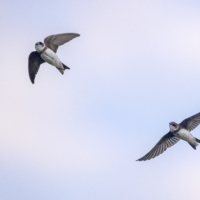This post is also available in: Swedish
Broad-billed sandpiper – Calidris falcinellus
Broad-billed sandpiper – Calidris falcinellus
is a small wading bird. The scientific name is from Latin. The specific name falcinella is from falx, falcis, “a sickle. Some research suggests that it should rather go into the genus Philomachus. Broad-billed sandpipers are small waders, slightly smaller than the dunlin, but with a longer straighter bill, and shorter legs. The breeding adult has patterned dark grey upperparts and white underparts with blackish markings on the breast. It has a pale crown stripe and supercilia.
In the boreal winter, they are pale grey above and white below, like a winter dunlin, but retaining the head pattern. Juveniles have backs, similar to young dunlin, but the white flanks and belly and brown-streaked breast are distinctive.
Contact call is a dry, whistling “dree-it, dree-it” and a clicking “dik dik”.
The broad-billed sandpiper is strongly migratory, spending the non-breeding season from easternmost Africa, through south and south-east Asia to Australasia. It is highly gregarious, and will form flocks with other calidrid waders, particularly dunlins. Despite its European breeding range, this species is rare on passage in western Europe, presumably because of the south-easterly migration route.
They forage in soft mud on marshes and the coast, mainly picking up food by sight. They mostly eat insects and other small invertebrates.
It sounds like this
Recording by Tero Linjama from Xeno canto


















